
Bill Bottrell: Method In The Madness
One of the world’s most enigmatic producer/engineers reveals some of the genius (and irony) behind the art of record production.
Text: Paul Tingen
Photography: Jennifer Owens & Jane Richey
Those who’ve worked with him say things like, “he’s a super-genius producer” or “he’s the most amazing producer there is”. It’s not hard to see why. The credit list is a pointer, containing heavyweight names like Madonna, The Travelling Wilburys, Michael Jackson, Sheryl Crow, Shelby Lynne, and Rosanne Cash. The producer also sprinkled his studio magic over albums by lesser knowns like Thomas Dolby, Toy Matinee, Linda Perry, Rusted Root, Toby Lightman, and Five For Fighting. Plus there’s a long list of Grammy nominations, one Grammy win (‘Record Of The Year 1994’ for Sheryl Crow’s Tuesday Night Music Club), and tens of millions in record sales.
Nothing to be sniffed at, undoubtedly. But most of all, listen to the albums Bill Bottrell has engineered and produced, and in many cases also played on and co-written. Bottrell has an uncanny knack for producing records that combine all the depth and refinement the modern recording studio can offer with an almost signature feel of aliveness and rock ‘n’ roll vibrancy, occasionally to the point of sounding ramshackle. Sheryl Crow’s Tuesday Night Music Club (1993) is the earliest obvious example of Bottrell’s unusual gift. For more recent demonstrations listen to Rosanne Cash’s Black Cadillac (2006) or Van Hunt’s On The Jungle Floor (2006), or check out the songs that are uploaded on Annie Stela’s MySpace page. Or, if you want to hear the ultimate triumph of feel over faultlessness – and in the process get a sense of Bottrell’s amazing song writing, singing, and performing talents – listen to his DIY, lay-them-down-in-two-hours demos, a rotating selection of which can be found on his MySpace page.
MAGIC IN A BOTTRELL
To dive straight into the deep end, how does Bill Bottrell manage to marry sublime sonic sophistication with such a strong sense of spontaneity? Part of the man’s answer lies in putting performers at ease. To this end Bottrell has over the past 15 years had three different private studios, all housed in regular buildings in cosy living rooms with curtains, sink-deep sofas and dimmed atmospheric lights.
“The main thing that I do as a producer, for better or for worse,” Bottrell observes, “is to orchestrate emotions in a room towards something – to get a good performance you need to set a mood, a vibe, and this is to do with the people and the environment, the room they’re in.
“I carefully regulate who is in the room. I don’t mean eliminate people – it can be a matter of consciously bringing people in to add to the vibe. I don’t pick musicians for what they play, but who they are and their ability to bring something to the room. Then I follow the energy of the group, wherever that leads. Group dynamics, the psychology of small groups of people, is a fascinating subject to me: the arc of synergy, how that ebbs and flows. And the producer has to be integrator of all these energies, making sure they get focused in one direction.
“I like it loose, and I like it somewhat chaotic. I like to find every distraction that I can, short of taking people’s minds off the music. Musicians have comfort zones, and way too often play their most comfortable thing, as opposed to what’s needed and what supports the energy of the whole. Getting them out of that is the whole challenge, and I may do things like put a thick book on the snare, or throw things at the guitarist while he’s doing a solo. The aim is to distract. The brain is pretty strong and people’s thoughts are many, and distraction creates better performances.”
THE DISNEY-FICATION OF MUSIC
So you’re a young performing band or artist, and while working in the studio you want to capture the same excitement and raw power that your live performances have. You like the sound of Bottrell’s ‘atmospheric distraction’ method, and wonder what more tips and tricks the great man has up his sleeve. It is here that things get a little hairy, because instead of answering directly, Bottrell first spouts some fierce opinions on the state of ‘music, the music industry, and everything’, that might make you wonder whether it’s worth bothering to record anything at all. So fasten your seatbelts and hold on to your hair, or, if you’re an older musician, your hat…
“I think recorded music has had its glory days and that it is on the wane now,” Bottrell begins, briskly. “The first indicator occurred during the ’90s, the era of CD-reissues, when I noticed that anything that we put out had to compete with a rich library of 100 years of recorded music. We all gained easy access to 100 years of fabulous musicians, wonderful performances, and great recordings, and this made it very difficult to create something that you felt would stand the test of time, even as we tried.
“Until deep into the current decade I continued making gorgeous recordings of Americana music, in the way I was used to in the ’90s. I, and others, were still making records like the ones we had made on analogue tape: full of nuance, fire, energy and sometimes cacophony. But we found that on digital they sounded terrible. It was only when producers and artists came up with ways of shifting focus, of saying things with minimal dynamics and arrangements, like in hip-hop, that things progressed. The fact is that music morphs to fit the medium. And digital breeds ‘Disneyfication’. Because of digital recorders we’ve lost something: the real value of music, the story, the humanity. And when I looked at myself labouring away at my console, I saw some sort of historical museum tableaux, like ‘that’s the way they used to do it.’ I felt like an historical anomaly.”
Technique has to be secondary to what you want to express and hear. If a carpenter is staring at his hammer all day, or he keeps changing his hammer, he’s not going to hammer any nails.

AMBIVALENCE RECIPROCATED
Bottrell’s feelings of dislocation and his ambivalence to the modern day global music machine appears to be reciprocated, with more of his work increasingly rejected. “In the past seven years,” remarks the producer, “eight out of the 10 full albums I’ve produced are either unreleased, or have only been released as a contractual necessity.” Among these is an album by Benji Hughes that Bottrell calls “the best thing I ever produced” – Hughes’ independent record company, apparently hated it. Other as yet unreleased gems are by singers Luan Perle and Annie Stela. While continuing to champion “marginalised” artists, Bottrell nevertheless appears to have overcome his antipathy to the big time; during 2006 he spent three months in Bahrain working on a new Michael Jackson album, but the singer never showed so the project was aborted.
Bottrell is currently working with Seal on a new album, part of the time in Los Angeles, and part of the time in the third incarnation of his home studio, this time called School House Studio. The first thing to officially come out of his home studio is the theme song he did with Seal for the movie The Pursuit of Happiness. In the context of Bottrell’s tirade against digital media, the music industry and his idea that recorded music is going to die, what moves him to rebuild his studio and still record music? And how does he imbue what he calls “the real value of music” – i.e., nuance, fire, energy, story, humanity – when everything he records ends up in the digital medium?
“A person wants to stay relevant,” Botrell replies, “and I’m doing that through finding my own way in the digital medium, while still applying certain standards of art and expression. ‘Americana’ had themes that were unchanging: worker against boss, man against nature, the village and the individual, etc. The whole world became intrigued by American popular culture because it was constantly presenting the crazy diversity and freedom we had, not in Hollywood, but in the streets of New Orleans, or Chicago, or Memphis. It’s still going on to some extent with hip-hop, but the whole process has now become subverted by our lack of freedom musically, which probably reflects America’s lack of freedom, spiritually and culturally. As a result American music has lost its grip on the global public’s imagination and the world got bored with the stories. I’m looking for new stories to tell, which will sound great on digital.”
Bottrell has in recent years been looking for artists who can tell these new stories. His work with Seal is an example. All the producer wants to say about it is, “we’re trying to make a dance record and hang on to some credibility. It’s a tightrope”. And from a technical perspective, how does Bottrell go about remaining relevant in the digital age? The omnipresence of analogue and ‘old-school’ equipment at School House hardly comes as a surprise, but has he changed his way of working or at least some of the equipment in his studio?
SOME OF BILL’S PLUG-IN STAPLES


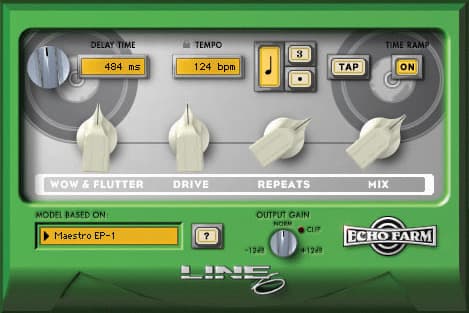


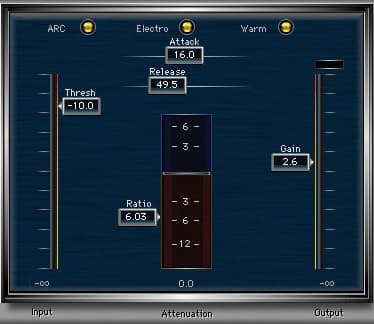
THE SCHOOL HOUSE EQUIPMENT
School House Studio’s heart is a Neve 44-input 8058 console, which incorporates 28 x 31102 mic pre/EQs and 32264a compressor/limiters. Bottrell has long been known as the champion of the vintage mic/valve preamp signal chain, and so there are the usual mic suspects by Schoeps, Neumann, RCA, Beyer, AKG and others that surely sound great with the Neve mic pres. Outboard includes a Yamaha REV1, Eventide H3000, Roland SDE3000 delays, dbx compressors, Massenberg 8200 EQ, and Electrix FilterFactory. Naturally there’s a Studer A800 analogue 16/24-track. Oh, and there’s the small matter of a full-blown ProTools HD 7.3 system, running on a Mac G5 with 192I/O interfaces, permanently set to run 24-bit/96k WAV files.
So what’s with the ProTools? Has Bottrell sold his soul to the digital devil after all? “Well, I was a fan of analogue, and I still am,” he answers. “It still excites me to work on analogue, and if I have a project that’s appropriate, I’ll go straight to my Studer. The Rosanne Cash album was recorded at The Pass Studio in LA on a Studer 827 24-track. But all the other projects I’ve done in recent years were recorded to ProTools. Sonically, ’Tools took a huge leap forwards with HD. They really got the system over the hill, and high definition digital definitely has more sonic detail. But the emotional details of a performance come through better on analogue – it’s just a different thing.”
Of course, the million-dollar question remains, ‘why can performances sound so gripping on analogue tape?’ Countless digital applications try to answer this with varying degrees of success, witness all sorts of ‘warmth’, ‘harmonics’ and ‘analogue mode’ buttons. It is put to Bottrell that while recording on analogue is like painting on a white canvas (ie the background noise and tape compression), recording on digital is like working on a transparent canvas. He replies, “I think that’s a very good analogy, and rather than what sounds best, you have to ask what sounds most appropriate, or most compelling, for the music. That’s what I have always gone for.”
“I’ve never attempted to make things sound as realistic as possible, and I don’t think in the past 20 years I’ve made a record with just two microphones and a two-track. But I still go for the illusion of a bunch of people playing a room, that’s the basis. And then you say, ‘Okay, this is not Louis Armstrong, and it’s not 1932, and the thing isn’t finished’. I like things to be in your face, and compelling and to be able to cut through the crap of all the media it has to go through. So you look at what you have, and say, ‘what can we do?’ And you may do some overdubs, but you still attempt to keep the initial inspiration of the performance, even in the overdubs. You don’t work it too much, and you go for early takes, and you go for immediacy, as opposed to any sort of perfection.
“I never believed in perfection, and the temptation to endlessly rework things in ProTools is not irresistible for me. I’ve done many things with ’Tools as just a recorder, using the same recording techniques as I did with analogue. I’ll use the ProTools arrangement and editing facilities, but I really dislike the sound of an all-digital mix. Mixing everything in ’Tools just doesn’t sound right to me, so I’ll always split it out and put it through my Neve console. I think that’s a fundamental difference. I think anyone who uses a computer to record, should save up $1500 and go out and get an analogue board from the late ’80s or early ’90s and mix through that. Leave the EQ flat, and do what you want to do in ProTools – or whatever system you’re using – but get the sound out by running it through a console.”
THE PLUG-INS CHAMPION?
Perhaps unexpectedly, the way Bill Bottrell applies his ProTools rig today goes much further than just as an analogue tape recorder with advanced editing facilities. Although he has an assistant, Mimi ‘Audia’ Parker, who mans – or in this case womans – his system for him, the producer now very much likes to get his hands digitally dirty. “The sound of my Neve console is lovely, so I use its EQ and often instinctively walk over and twist the knobs. I’ll also use the Neve mic preamps and the ProTools A/D converters. I have a set of DB Technology A/D converters, but only use those if there’s a problem. I’ve spent my whole life, since I was 12 years old, crawling on floors and plugging or unplugging things, and I just don’t feel like doing it much anymore. So if nothing is bothering me, I don’t do it [laughs], and I’ll do sonic manipulation inside of ProTools HD.
“I take plug-ins on a case-by-case basis. If I don’t get mad at a plug-in, I’ll leave it. I can’t remember the names – Mimi sets all these things up for me – but there’s this equaliser that’s green [the McDSP Filterbank F2] and I can put that thing over everything I record. I love it. It’s flexible and brilliant – all I need from an EQ. I also use ’Tools for creating samples, depending on the music. I have an open mind about ProTools now, and will try anything, but I’ll also know when it’s crap. For instance, Auto-Tune is a blasphemous thing to apply to a vocalist, absolutely evil! We can talk about changing media and the death of the music industry, but part of the blame for the state of music has to go to crap music made by people with poor taste. And a symptom and symbol of that is to Auto-Tuning singers.”
Right. Undoubtedly, you’ve all taken note of that. Returning, in Bottrell’s inimitable roundabout way, to the topic of where his expensive state-of-the-art studio approach and that of people working on a budget in home studios overlap, he concludes, “technique has to be secondary to what you want to express and hear. If a carpenter is staring at his hammer all day, or he keeps changing his hammer, he’s not going to hammer any nails. Whatever tool you have, you have to master it and make it transparent for you, and then move on to the art. I probably cursed ProTools for two years – at first it subdued me, and then I subdued it, and now it’s transparent for me.”
“You start with something vibrant, and if you’re the artist recording yourself, be the artist. Technique should be put out of your mind. I suppose that’s what I do on my solo work. I record quickly and spontaneously, and whatever comes, I leave it, even as I may later go back to it and edit or otherwise change it. But it’s very important to not let anybody or any concept stop you, because you think it is not supposed to be done in a certain way. I like to start over with every project that I do, and see where that leads. There are a thousand ways to make a record, and we have to find the one that works.”







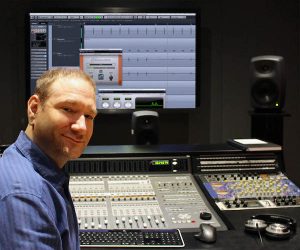
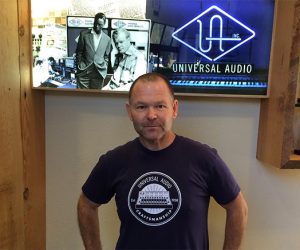


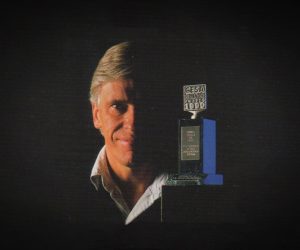

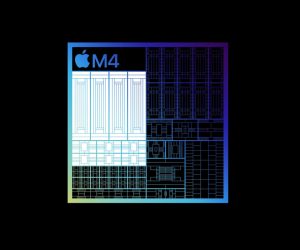


RESPONSES